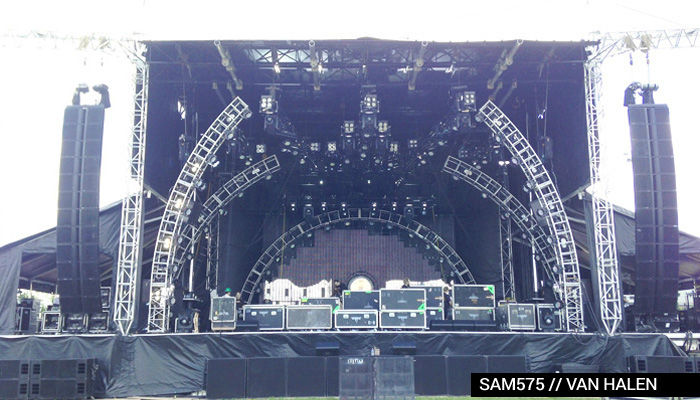Every event is different from every other, and every stage should reflect that. Promoters can make use of exclusive installations along with exciting sound, screen and lighting systems to make their events unforgettable.
At the technical level, rigging equipment to the stage roof must follow clear-cut rules. For success in the setup of a stage and all its components (sound, lights, screens and banners), all the technicians have to be on the same page and they must all be following the same gameplan.
How can you make sure your setup is successful and safe?
It starts with comprehensive training
Safety is the top priority which is why every technician and logistics agent must know the product and its capabilities perfectly and be trained in the best practices of making the equipment work. Training ensures a safe and efficient setup. Be sure your stage supplier can supply training/trained staff, since it affects every aspect of the setup procedure.

Based on the stage capacity (inset), the sound, light and screen installation must be clearly defined on a rigging plan and then be approved by a qualified person.
A team of experts for creative solutions
Every stage will have been designed with numerous rigging points, each of which supports a given load. The client’s plan must be checked to see whether it’s in line with these weight limits. Ideally that plan is precise and detailed (where to rig what, where to position the loads…). But in every case, that plan must be examined by skilled people. They’ll review all weights to make certain they don’t exceed limits and that the safety of the structure is guaranteed. Sometimes this takes a lot of creativity and negotiation – but experts can always find solutions! One of the things your logistics advisor can do is propose a new lifting procedure that will meet your staging needs without compromising safety.
In other words, dialogue between stage supplier and client is essential to the success of a project that will both satisfy the client and meet all safety standards. Make sure your supplier provides you with a complete summary document on what can and can’t be done when setting up your stage. It will pay off in time saved…and in peace of mind!


